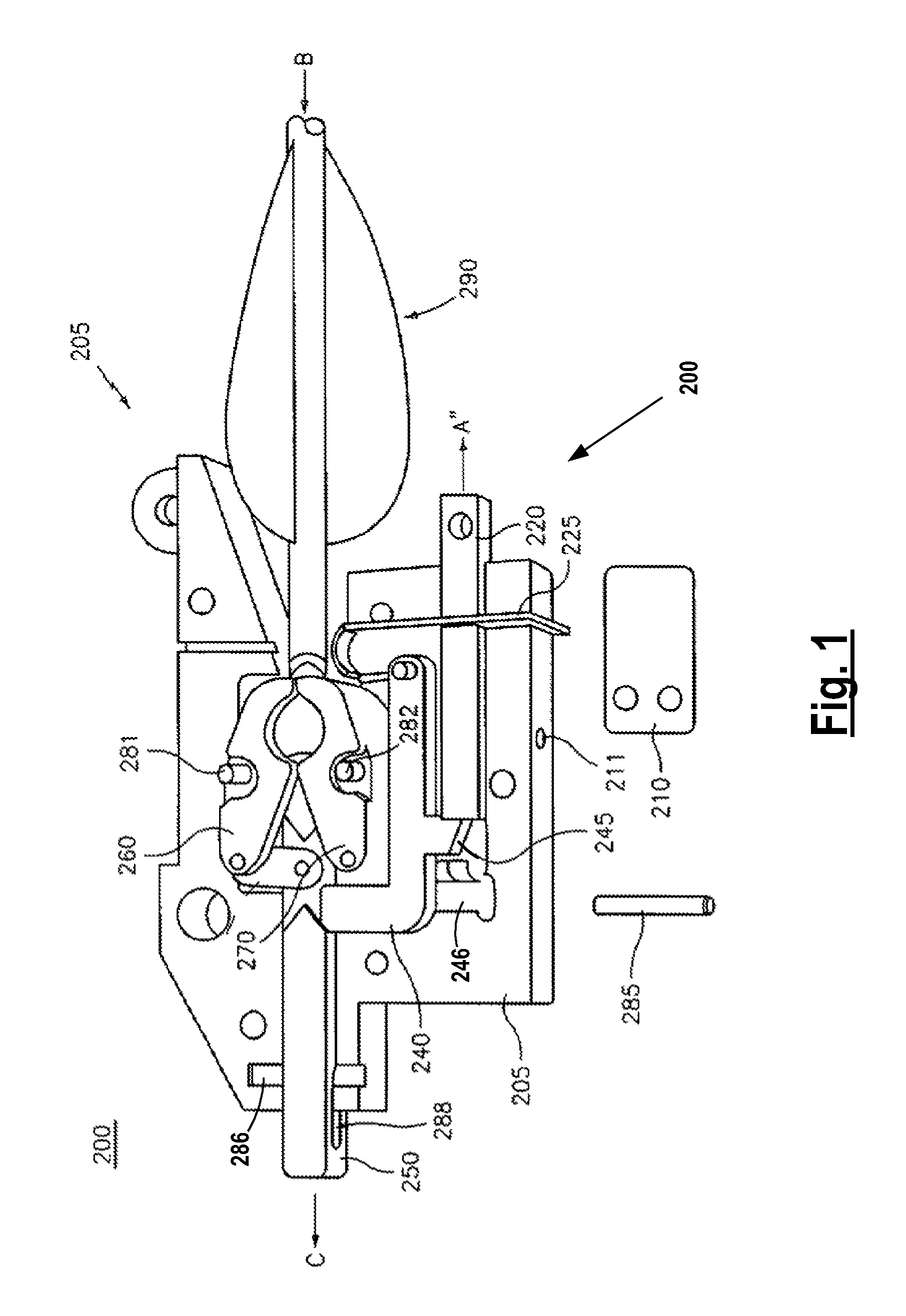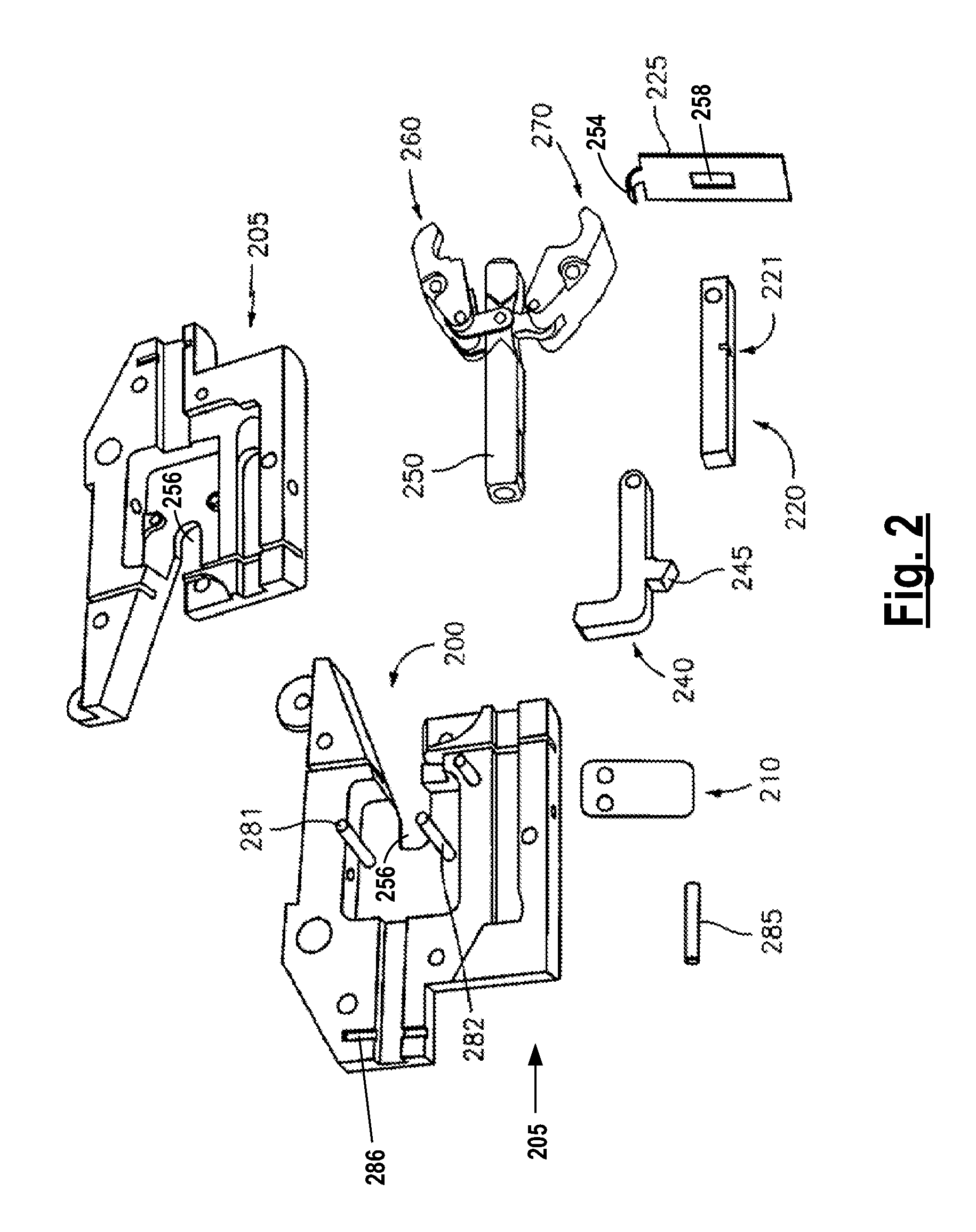Crossbow dry fire arrestor
a technology of dry fire arrestor and crossbow, which is applied in the field of crossbows, can solve the problems of increased firing velocity, damage or injury, damage to crossbow strings, cams and other components,
- Summary
- Abstract
- Description
- Claims
- Application Information
AI Technical Summary
Benefits of technology
Problems solved by technology
Method used
Image
Examples
Embodiment Construction
[0032]The following detailed description of the preferred embodiment of the invention will be made in reference to the accompanying drawings. In describing the invention, explanation about related functions or constructions known in the art are omitted for the sake of clarity in understanding the concept of the invention, as such would obscure the invention with unnecessary detail.
[0033]As shown in FIGS. 13-16 crossbow 100 includes stock 110, barrel 120, dry fire arrestor 200, telescopic sight 150 and sight mount 140 which secures the sight on arrestor 200. The crossbow 100 has limbs 160 and string 170.
[0034]FIG. 1 provides a cutaway view of the crossbow dry fire arrestor 200 in an engagement, i.e. cocked position, with a tensioned crossbow string (not shown) held between closed upper and lower jaws 260, 270 awaiting firing of the crossbow. Upper and lower jaws 260, 270 are shown in an open position in FIG. 12 and are shown in a closed (or cocked) position in FIGS. 1, 6 and 8.
[0035]...
PUM
 Login to View More
Login to View More Abstract
Description
Claims
Application Information
 Login to View More
Login to View More - R&D
- Intellectual Property
- Life Sciences
- Materials
- Tech Scout
- Unparalleled Data Quality
- Higher Quality Content
- 60% Fewer Hallucinations
Browse by: Latest US Patents, China's latest patents, Technical Efficacy Thesaurus, Application Domain, Technology Topic, Popular Technical Reports.
© 2025 PatSnap. All rights reserved.Legal|Privacy policy|Modern Slavery Act Transparency Statement|Sitemap|About US| Contact US: help@patsnap.com



